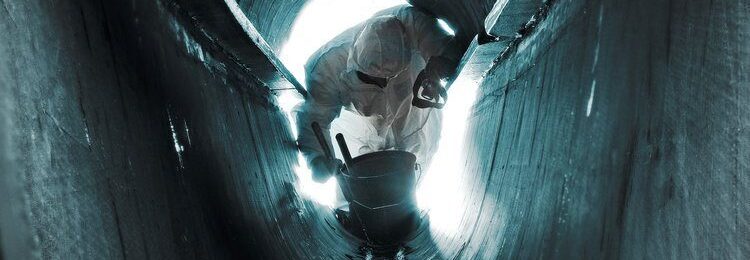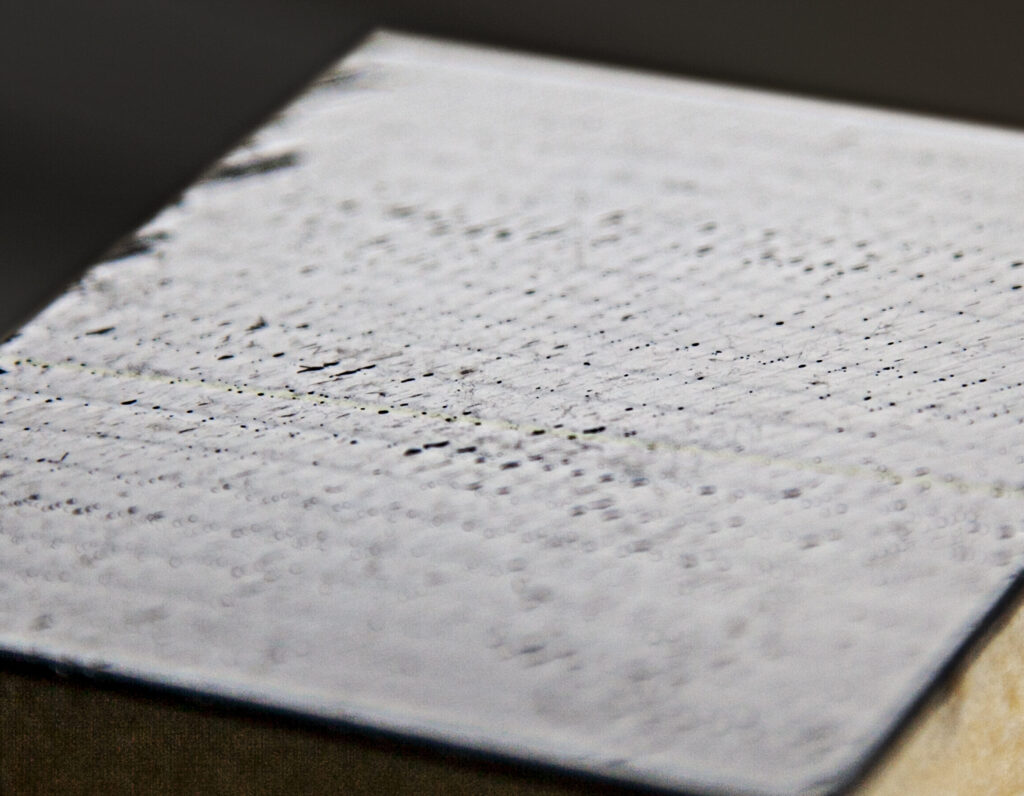MATERIALS
WHY COMPOSITE?
The high strength contra weight ratio of carbon fiber makes it possible to reduce the weight significantly while maintaining the desired strength in a given construction. When carbon fiber is used the weight is reduced significantly which leads to a large reduction in the level of fuel consumption, which again leads to a reduction in the CO2-emission.
Example:
By choosing carbon fiber -> Hull weight is reduced -> reduction in operational power -> requires a smaller engine -> lower overall weight -> less fuel consumption -> less CO2-emission. This also opens the possibility of using the advantage of the lower weight by allowing more passengers or larger cargo and thereby heightening the effectiveness of the vessel.
WHAT IS COMPOSITE?
Carbon fiber is a material consisting of fibers of about 5 – 10 μm in diameter – mainly carbon atoms. Several thousand carbon fibers are bundled together to form a string that can be used on it’s own or woven into a cloth.
The properties of carbon fiber – like high degree of stiffness, high tensile strength and elasticity, low weight, high chemical resistance, high degree of temperature resilience and tolerance and low thermic expansion, are all properties that has made carbon fiber a popular material in aerospace science, the military, motorsports, industrial production and several competitive sports.
When carbon fiber is combined with other materials a composite is created. When combined with plastic materials carbon fiber reinforced plastic is created. These types of materials have a very high strength to weight relationship.

Many people are not aware of the advantages of CARBON fiber composites over aluminium, so here we will highlight some of them
Life Span
Composite boats have longer life span due to their non-corrosive nature and the capacity of the materials to dampen vibrations and protect against structural degradation. Fast going aluminium boats have a maximum lifespan of 15 to 20 years before vibrations starts generating cracks in the welding/plate connections. The relative difference in stiffness between welded connections and plating means that forces cannot be transferred to and from the plating without creating cracks over time.
weight
Generally, carbon fibre composite boats are 30% lighter than comparable aluminium boats. This translates into less fuel consumption and higher speeds. Carbon fibre itself is known for its impressive strength-to-weight ratio which is higher than all other materials used in boatbuilding. Although carbon fibre is four times stronger than high-grade steel, it weighs only 25% as much.
| Material | Type | Mass | Tensile strength | Elasticity module |
|---|---|---|---|---|
| kg/m³ | Mpa | Gpa | ||
| Steel | Low-Grade | 7750 | 150-1500 | 210 |
| Steel | High-Grade | 7600-8000 | 200-2000 | 190-205 |
| Aluminium | Alloy | 2700-2800 | 34-500 | ~70 |
| Glass fiber | E-Glass | 2540 | 2400 | 73 |
| Carbon fiber | T700 | 1770 | 5300 | 235 |
Impacts/safety
Composite boats are much safer than aluminium boats. When aluminium boats are subjected to impacts, the hull is often penetrated. A simple drop test clearly shows the improved safety of a sandwich composite hull structure. By dropping a 12-kilo weight from 5 meters of height onto an aluminium hull plate, the hull plate will be penetrated. Consequently, there is a risk of water ingress and both crew and boat are exposed to danger.
The same test performed on a sandwich panel shows that only the outer skin of the structure is penetrated while the core material absorbs the remaining energy, leaving the inner skin undamaged This means no risk of water ingress and less danger to boat and crew members.
Paints and surfaces
Aluminium surfaces need constant maintenance since any minor scratches or compromises to the paint will expose the aluminium. Under such circumstances the aluminium will start to oxidize, and more paint will start peeling off and result in further surface degradation.
With composites, scratches are purely cosmetic and no repaint or maintenance is needed.
Applications
During the last century, carbon fibre has been the preferred material for any high-end application. Giant steps forward in the use of carbon fibres, not only in the space industry but also more generally in the commercial aerospace industry, has led to significant developments in carbon fibre production and lowering of prices. Better availability has led to an extended use of carbon fibre in more industrial applications – including high-speed marine applications which leaves aluminium in second place in the race for high-performing, durable maritime solutions.
QUALITY


Quality and safety
Quality and safety are fundamental keywords at Tuco Marine Group. When working with composite materials it is crucial that the quality is 100 percent under control.
Our dedicated and skilled employees ensure the high quality in every step of the manufacturing process – right from the selection of materials and quality control when entering the facilities at Tuco to the final approval of the finished product.
Control & Documentation
At Tuco we perform our quality control by running tests and samples of our products and materials on a regular basis through the whole production process. Besides testing the tensile strength and elasticity the hardening values of each molding is measured in order to ensure our high quality.
For each individual project Tuco makes quality papers. Documentation, quality procedures and manuals follow the manufacturing process. The quality papers are specified down to each single subject, gathering, assemblage, molding and surface treatment. Each subject and part is given it’s own number to obtain the highest possible level of traceability. The operator performing the task fills out the papers and at the same time every step is supervised and signed for by the quality inspector assigned to the project. The quality inspector is responsible for the project.
Classification approved projects
Tuco has many years of experience with manufacturing vessels approved by different classification companies and we have collaborated with companies like Lloyds and DNV to their full satisfaction.
When working on class approved projects – besides Tuco’s own quality control – there are frequent visits by specialist quality inspectors from the classification company in question. Tuco has a close and good cooperation with the classification company on regularly optimizing the quality- and production documentation.
At Tuco we are ready to find the best possible solution that fully meets with your needs and demands while living up to and maintaining the high quality level set by both Tuco and the classification companies.



